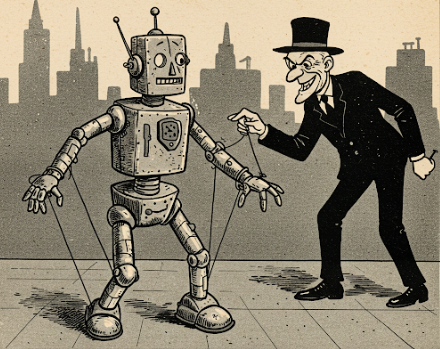· 5 min read
The Early Days of Digital Assistants - Who They’re Really Serving
Years ago, I pondered the fundamentals of what seems to on FIRE right now! But are we still looking at this all wrong?!

Around 2008, long before Siri or Google Assistant became household names, I found myself fascinated by the potential of personal digital assistants (PDAs). Back then, the term referred to handheld devices—think iPhone, Blackberry, etc. But I wasn’t as caught up in the devices themselves as I was in potential of what I thought they could become. There was something bigger at play. I scribbled down my thoughts at the time, and posted them amaturishly on something (probably a long deleted Blogger/Blogspot account somewhere) and though they were simple, they feel even more relevant today :
“PDAs are great, but the problem with these Personal Digital Assistants is that they aren’t personal enough. They are, for the most part, built for the companies that supply them, not for the individual. What we need (and I get that this is a ‘hard ask’) is for these assistants to actually be agents—existing for the individual, with that individual’s best interests in mind.” (NOTE: if anyone finds the complete and original text, please reach out to me and let me know!)
Back then, I wasn’t deep into the tech world. I didn’t have a fancy device or a deep understanding of AI or machine learning. What I did have was a sense that these technologies were being shaped more by commercial needs than human ones. The devices weren’t designed to serve us, the individuals using them—they were designed to serve the companies selling them. Sure, they made our lives easier in certain ways, but this was a byproduct, not the main goal.
Fast forward to today, and it’s clear we’ve made incredible progress. AI is woven into the fabric of our daily lives—managing our calendars, giving us recommendations, controlling our homes. Yet, looking back on those early musings, I’m struck by how little the core problem has changed.
Who Is AI Really Working For?
AI has undeniably become more powerful and sophisticated. But here’s the real question: who is it truly working for?
Are these systems designed to serve us, or are they still primarily focused on meeting corporate agendas? While there’s an argument that it’s a bit of both, the reality is that the resources to support these systems have to come from somewhere. As a result, it often feels like the emphasis is skewed more toward corporate interests. Yes, AI provides us with convenience, entertainment, and connectivity, but at its core, it is optimized for profit. Recommendation algorithms, voice assistants, and targeted ads are fine-tuned to benefit the companies behind them—not necessarily to serve our individual needs.
Looking closely, it appears we are in the same situation I envisioned all those years ago. We’re still surrounded by “assistants” that aren’t truly personal. The AI systems we interact with are designed to encourage us to spend more time on platforms, purchase more products, or engage more with services—not to genuinely understand or advocate for our unique needs and preferences.
Is a True ‘Personal Agent’ Possible?
So, where does that leave us? The idea of a digital assistant acting as a true personal agent—something that exists to serve you, and only you—still feels like a distant goal. But it doesn’t have to be. There’s a vision here, a direction we can pursue.
If we want technology that genuinely works for us as individuals, we need to rethink the systems that underpin it. Currently, the incentives are skewed toward corporate gain. But what if we flipped those priorities? What if the primary goal was the health, wealth, and safety of individuals, and this, in turn, benefited corporate interests? Could we create a system where individual needs align with corporate goals—where empowering individuals also drives profitability?
Perhaps that’s a utopian vision, but it’s attainable if we reconsider the relationship between profit and personal empowerment. Right now, it feels like the bottom line—the imperative to make shareholders happy—often corrupts this ideal. However, it might not be impossible to adjust the system itself to better align individual interests with commercial success. Who knows? In a topsy-turvy, snake-eating-its-own-tail way, perhaps AI can help us navigate the nuances of making such changes in our world…
Where to From Here?
Where does that leave us today? It’s clear that AI and digital assistants will continue to evolve. But how they evolve is up to us.
If we want AI that genuinely works for us—acting as true agents that advocate for our personal needs—we must demand it. We need technology that prioritizes our well-being and individual preferences over aggregate data and corporate interests. This shift isn’t simple, especially when marketing juggernauts invest massive resources to convince us that products are better and safer than they truly are, all while we hand over our hard-earned dollars for a disappointing reality.
The future of AI could follow its current path, optimizing for profit and efficiency, or it could be re-imagined to genuinely serve individuals. Where to from here? It’s up to us to decide. We can either settle for convenience or push for technology that truly prioritizes our best interests. While the challenge may be daunting, perhaps together we can navigate the complexities and advocate for a future that aligns technology with humanity’s needs. Who’s with me?


